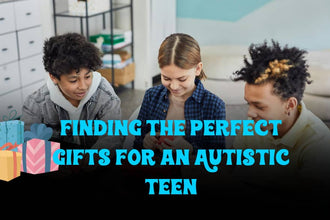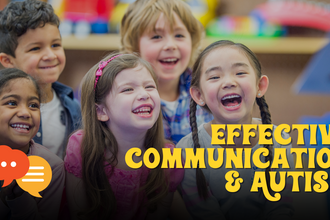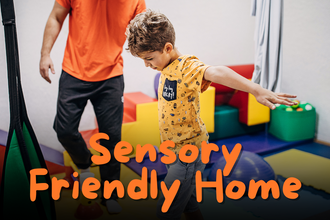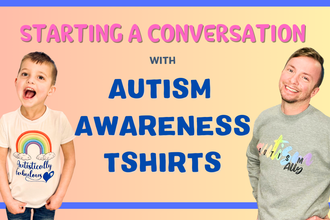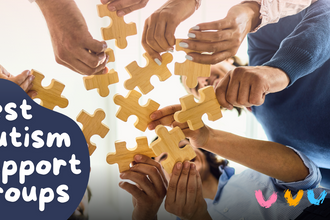
In today's world, it's hard to miss the craze surrounding Pop It toys. With their vibrant colors and addictive popping bubbles, they are found everywhere. But beyond their fun appearance is a question that's worth thinking about: Could these toys offer more than just fun? Specifically, could they provide valuable support for individuals with autism?
In this blog post, we're going to find out the ways and reasons why Pop It toys can be beneficial for children with autism. Additionally, we'll see which types of Pop It toys are most suitable for your child.
Understanding Fidgeting
Fidgeting refers to the small, often unconscious movements or behaviors that people engage in, such as tapping fingers, bouncing legs, or twisting hair. These actions may seem random or purposeless but can serve various functions.
Why We Fidget?
Fidgeting serves as a natural response to different stimuli and situations, often fulfilling specific needs:
- Staying Focused: Fidgeting can help individuals maintain focus and attention, especially during tasks that require prolonged concentration. By engaging in minor movements, individuals may alleviate restlessness and stay more engaged in the task at hand.
- Managing Emotions: For many people, fidgeting serves as a coping mechanism for regulating emotions. When experiencing stress, anxiety, or other intense emotions, fidgeting provides a physical outlet to release tension and promote relaxation.
- Physical Comfort: Fidgeting can also be a means of seeking physical comfort. Whether adjusting posture, shifting weight, or stretching muscles, these movements help individuals find relief from discomfort or stiffness, contributing to overall well-being.

Autism Spectrum Disorder (ASD) and Fidgeting
Autism Spectrum Disorder (ASD) is a condition where people might find it hard to communicate, make friends, or understand social cues. They might also have strong reactions to things like loud noises or bright lights.
Individuals with Autism Spectrum Disorder often fidget due to these reasons:
- Emotional Regulation: Fidgeting helps people with ASD feel better when things get too loud or bright. It gives them comfort and control over their feelings, making them less stressed.
- Coping with Sensory Overload: Sometimes, things like strong smells or loud noises can be too much for people with ASD. Fidgeting helps them deal with these overwhelming sensations, so they feel calmer and more balanced.
- Enhancing Tactile Awareness: Fidgeting helps people with ASD notice things around them better. By touching different textures and feeling different sensations, they become more aware of their surroundings, which makes them feel more comfortable and secure.

Benefits of Pop It Toys in ASD
-
Boosting Focus
Pop It toys can help individuals with ASD maintain attention. The repetitive popping action can serve as a calming and engaging sensory experience, helping to reduce distractions and improve focus on tasks or activities.
-
Sensory Satisfaction
These toys provide sensory stimulation, offering a variety of textures and tactile feedback. The satisfying popping sound and the different shapes and patterns can help individuals with ASD explore and engage with their senses in a controlled and enjoyable manner.
-
Managing Emotions
Pop It toys serve as a tool for individuals with ASD to cope with anxiety and stress. The rhythmic popping motion can be soothing and comforting, helping to regulate emotions and provide a sense of calm during stressful situations.
-
Improving Behavior
These toys have a positive impact on behavior for individuals with ASD. Engaging with these toys can redirect attention away from challenging behaviors and promote more constructive and focused activities, contributing to improved behavior and self-regulation.
-
Social Play
Pop It toys encourage interaction and social play among individuals with ASD. Sharing and taking turns with these toys can foster social skills such as communication, cooperation, and empathy, while also providing opportunities for enjoyable and meaningful social interactions.

Choosing the Right Pop It Toy
Choosing the right Pop It toy for an autistic child involves considering their sensory needs, preferences, and developmental goals. Here are some tips to guide your selection:
1. Sensory Preferences
Observe whether your child prefers soft, squishy textures or firmer ones. Pop It toys come in various materials, so choose based on what feels most comfortable for them. Consider the sound produced by the toy. Some children enjoy the soft popping sound, while others may find it overwhelming. Opt for a Pop It with a sound level that suits your child.
2. Learning and Fun
Pop It toys offer more than just entertainment—they also provide educational and therapeutic benefits. These pop it toys incorporate educational elements such as numbers, letters, shapes, or colors. These toys can support learning and cognitive development while engaging individuals in fun and interactive activities.
3. Safety and Material
When choosing pop it toys, it's essential to ensure they meet safety standards. Opt for toys made from non-toxic materials that are durable and free from choking hazards. Check for age-appropriate recommendations and inspect the toy for any sharp edges or small parts that could pose a safety risk.

Final Verdict
Pop It toys are more than just a craze; they offer valuable support for individuals with autism. They help with focus, emotional regulation, and sensory stimulation. When choosing a Pop It toy, consider your child's sensory preferences, learning needs, and safety. With the right Pop It toy, individuals with autism can enjoy learning and play while feeling safe and supported.
Become a part of Prideful on the Spectrum's community today where we spread awareness about the diverse spectrum of abilities in autistic individuals. Explore our carefully crafted toys and a clothing line that aims to celebrate differences and challenge stereotypes. Come and join hands in bringing a change- Explore now!


